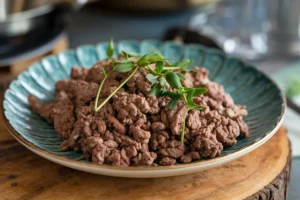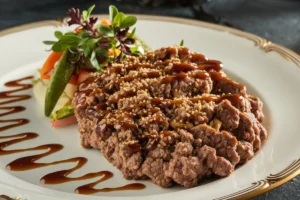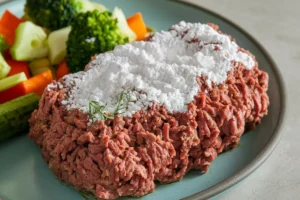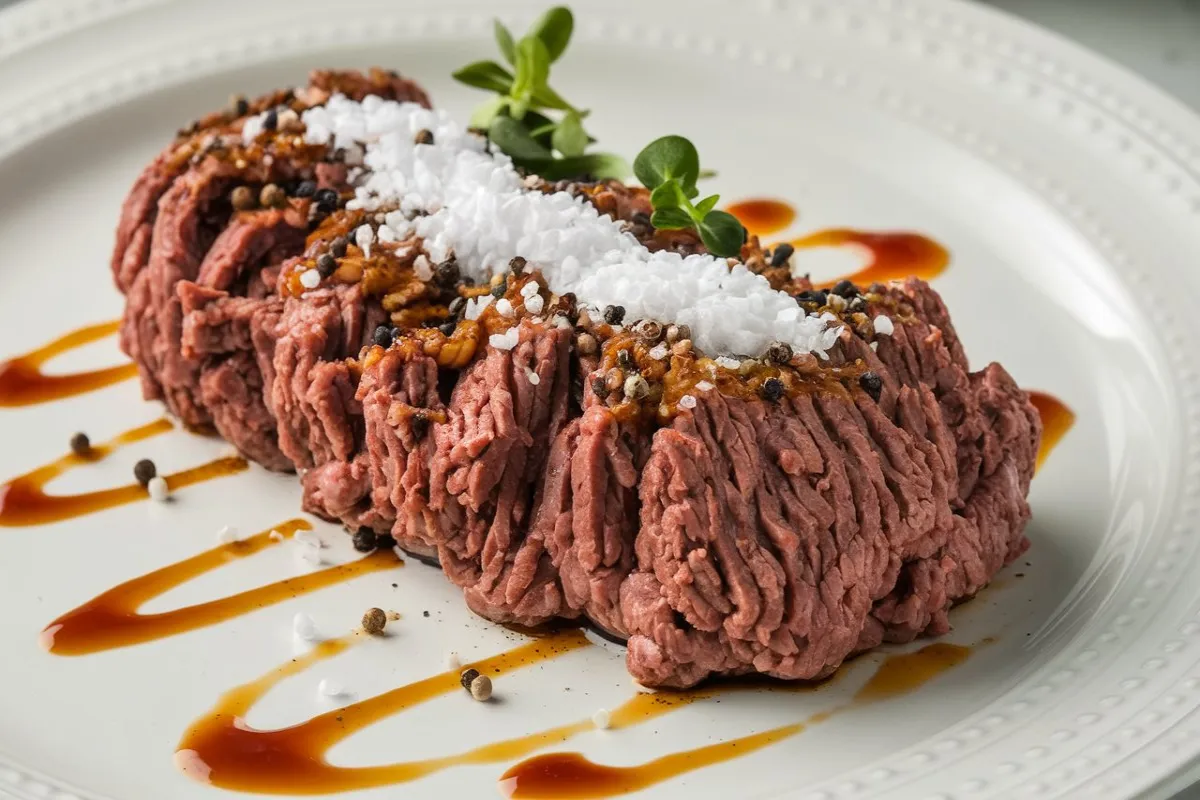Adding baking soda to ground beef might sound unusual, but it’s a powerful technique that can transform your cooking. This common kitchen hack doesn’t just improve the texture of your meat; it also enhances flavor, moisture, and overall quality. By understanding why and how this method works, you can elevate your dishes, making them more delicious and satisfying.
What is Baking Soda and How Does It Work?
Baking soda, scientifically known as sodium bicarbonate, is an alkaline compound used in cooking to balance pH levels. When added to ground beef, baking soda raises the pH of the meat, making it less acidic. This shift in pH prevents the proteins in the beef from bonding excessively, which is often the cause of tough and chewy meat. Instead, the meat stays tender, moist, and full of flavor.
To get a deeper insight into how baking soda works in cooking, check out the Science of Cooking with Baking Soda. Understanding the basic chemistry behind this technique can help you utilize it effectively in various recipes.
Why Do You Put Baking Soda in Ground Beef?
Adding baking soda to ground beef is not just about altering the pH; it fundamentally changes how the meat cooks and tastes. Here’s why many cooks swear by this method:
- Improved Texture: Baking soda prevents the proteins from binding tightly, which keeps the meat tender and soft.
- Enhanced Moisture Retention: It helps lock in the meat’s natural juices, preventing it from becoming dry and tough during cooking.
- Better Browning: The alkaline environment created by baking soda promotes more efficient browning, resulting in richer, deeper flavors.
For expert advice on cooking ground beef, check out Cooking Light’s Ground Beef Cooking Tips, which provides additional insights into maximizing your meat’s potential in the kitchen.
Scientific Explanation: How Baking Soda Affects Ground Beef

The magic of baking soda lies in its ability to alter the meat’s pH balance, making it more alkaline. Here’s what happens on a chemical level:
- Prevents Protein Bonding: Normally, as meat cooks, proteins bond tightly, leading to a dense texture. Baking soda’s alkalinity prevents these bonds, keeping the meat tender and pliable.
- Accelerates Browning: The increased pH speeds up the Maillard reaction, which is responsible for the browning of meat. This reaction enhances the savory flavors that make ground beef taste rich and complex.
- Retains Moisture: By disrupting protein bonding, baking soda helps the meat hold onto its moisture, ensuring it remains juicy throughout the cooking process.
Step-by-Step Guide: How to Properly Use Baking Soda in Ground Beef
Using baking soda in ground beef is straightforward, but there are specific steps to follow for the best results. Here’s a detailed guide:
- Measure the Baking Soda: Use about 1/4 teaspoon of baking soda per pound of ground beef. This small amount is sufficient to alter the meat’s pH without affecting its flavor.
- Sprinkle and Mix: Evenly distribute the baking soda over the raw ground beef. Use your hands or a spoon to mix it thoroughly, ensuring that all the meat is coated.
- Let It Rest: Allow the meat to sit for 15 to 20 minutes. This resting period is crucial as it gives the baking soda time to work on the meat’s proteins.
- Cook as Usual: Once the meat has rested, cook it according to your recipe. You’ll notice improved browning, enhanced flavor, and a more tender texture.
Benefits of Using Baking Soda in Ground Beef
The benefits of using baking soda in ground beef extend beyond just taste and texture. Here are the key advantages:
- Juicier Meat: Retains more moisture, making the beef succulent rather than dry.
- Enhanced Flavor: Promotes better browning, which brings out the meat’s natural umami flavors.
- Faster Cooking: The increased pH level reduces the cooking time needed for the beef to achieve a perfectly browned finish.
- Versatility: This method works well with a variety of dishes, from burgers and tacos to stir-fries and casseroles.
Applications: Best Recipes for Baking Soda-Treated Ground Beef
Baking soda-treated ground beef can be used in numerous recipes, adding extra tenderness and flavor to your favorite dishes. Here are some popular applications:
- Juicy Burgers: Ensure your burger patties are tender and full of flavor with a touch of baking soda.
- Savory Tacos: Keep your taco meat moist and delicious by treating it with baking soda before cooking.
- Perfect Chili: Achieve that rich, deep flavor and perfect texture in your chili with baking soda-enhanced beef.
- Asian Stir-Fries: Incorporate baking soda to keep ground beef tender in your stir-fry dishes, making it easier to mix with vegetables and sauces.
Tips and Tricks for Using Baking Soda with Ground Beef

To get the most out of using baking soda in your ground beef, follow these tips:
- Use the Right Amount: Stick to the recommended 1/4 teaspoon per pound of meat. Using too much can lead to an off-putting taste.
- Mix Thoroughly: Ensure the baking soda is evenly distributed throughout the meat to prevent clumping.
- Allow Time to Rest: Letting the beef sit with baking soda before cooking is crucial for the best results.
- Adjust Based on the Recipe: You may want to adjust the amount of baking soda based on the specific dish. For example, use slightly less for delicate dishes where a strong beef flavor is desired.
Potential Downsides and Common Myths
While using baking soda in ground beef offers numerous benefits, there are a few considerations to keep in mind:
- Overuse Can Alter Taste: Adding too much baking soda can give the meat a slightly bitter taste. Always measure carefully.
- Not a Cure-All: While baking soda improves texture, it doesn’t replace proper seasoning. Be sure to season your meat adequately with salt, pepper, and other spices.
- Common Myths: Some believe that baking soda makes the beef salty or chemically altered. However, when used correctly, baking soda enhances rather than detracts from the meat’s natural qualities.
Frequently Asked Questions (FAQs)
- How much baking soda should I use in ground beef?
You should use approximately 1/4 teaspoon of baking soda per pound of beef. This amount is sufficient to change the pH without overpowering the meat’s flavor. - Can baking soda make meat too salty or affect the taste?
No, baking soda does not add a salty taste to the meat. However, using too much can alter the overall flavor, so it’s best to stick to the recommended measurements. - Is baking soda safe for all types of meat?
Yes, baking soda is safe to use with ground beef, chicken, pork, and other meats. It works particularly well with ground meats due to their loose structure. - How long should ground beef sit with baking soda before cooking?
For the best results, let the ground beef sit with baking soda for at least 15 minutes before cooking. This allows the chemical reaction to fully take place. - Does baking soda work with other seasonings?
Absolutely! Baking soda enhances the texture of the meat without interfering with other seasonings. Feel free to mix in your favorite spices and herbs for added flavor.

Conclusion: The Final Verdict on Using Baking Soda in Ground Beef
Adding baking soda to ground beef is a game-changer for any home cook. This simple technique enhances the texture, flavor, and moisture of your meat, making it an invaluable trick for various recipes. From burgers and tacos to stir-fries and chili, the benefits of using baking soda are clear. By preventing protein bonding, retaining moisture, and promoting better browning, baking soda helps you achieve perfectly tender and delicious ground beef every time.
Experiment with this method in your next meal, and you’ll discover how a little bit of baking soda can make a big difference. Whether you’re a seasoned chef or a kitchen novice, this easy tip can elevate your cooking to new heights, bringing out the best in every dish.

